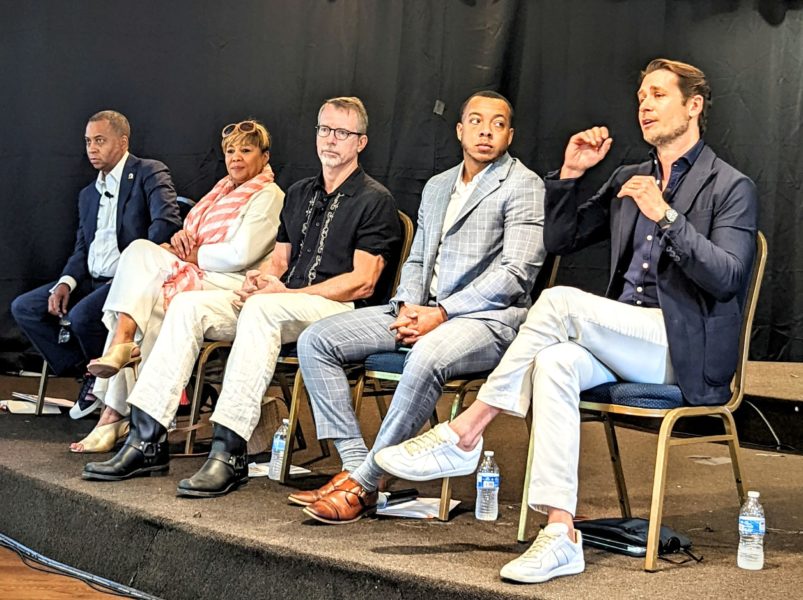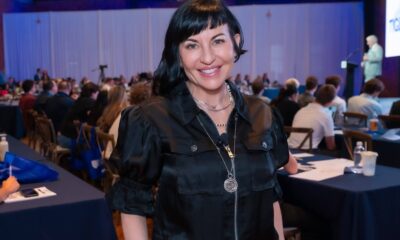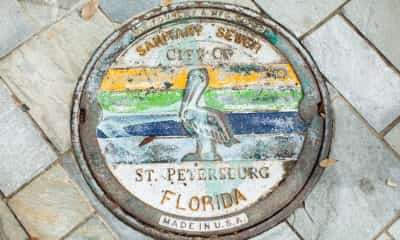Place
Inside the 22nd Street South renaissance

St. Petersburg’s 22nd Street South corridor is riding a wave of momentum, with several transformative projects slated for the oft-overlooked area of the city affectionately known as the Deuces.
The St. Petersburg Downtown Partnership sought to highlight the developments changing the trajectory of the area at Tuesday’s Leadership Lunch in the historic Manhattan Casino – located in the heart of the Deuces. Moderated by Veatrice Farrell, partnership member and executive director of Deuces Live, the luncheon brought city officials and community leaders together to hear directly from five people leading the area’s renaissance.
Rev. J.C. Pritchett, president of the Interdenominational Ministerial Alliance; Terri Lipsey Scott, Executive Director of the Woodson African American Museum of Florida; Mark Aeling, chair of the Warehouse Arts District Association; Jamison Carnegie, co-project manager for Sankofa on the Deuces and executive director of Mt. Zion Human Services; and Joe Furst, founder of Place Projects, took the stage to discuss their respective projects. Altogether, there are about 13 major developments on tap for the Deuces.
“I don’t want people to leave here thinking there’s not been activity on the on this corridor,” said Farrell. “We have just built up over the last 10 years to this, and I want to thank everyone in the audience and everyone who supported events on the corridor because that’s what led to this.”
Carnegie described the Sankofa project, just across the street from the Manhattan, as a multi-pronged development encompassing 35,000 square feet of commercial space, 24 affordable townhomes and a digital and technology business incubator meant to spur high-wage job development in the area. He said the housing, available for those making between 60-120% of the area median income, is primarily for people that work and operate small businesses in the development.
Carnegie stressed the importance of the incubator, the first of its kind in South St. Pete, and hopes it can help fuel growth in the once-thriving commercial district, historically home to over 100 predominantly Black-owned businesses.
“Why can’t we bring that back,” he asked. “That’s what we’re here to do.”
Pritchett is spearheading the Legacy Center project, a two-story development at 800 22nd St. S. that will serve as a social justice hub and host conferences, workshops and educational panels. Pritchett noted the rich history of the site and stated its importance to the past and future of the surrounding community. He expects the center to open around Christmas.
The building’s upstairs will house two suites for travelers. Pritchett explained that segregation forced African American baseball players through the 1950s and ’60s to room away from their teams during Spring Training. The professional athletes stayed with doctors and lawyers along 22nd Street instead. Pritchett said he held discussions with Tampa Bay Rays officials about decorating the upstairs space with unique, historical baseball memorabilia.
“But the upstairs space will be a revenue generator … our organization of faith leaders can never be in a position again not to serve because we’re depending on grants, loans or handouts,” said Pritchett emphatically. “And so, I’m very pleased … it will be the first building built on 22nd Street since St. Pete College was built almost 15 years ago.”
Lipsey Scott is leading a fundraising campaign for the $27 million needed to build Florida’s first “purpose-built” African American museum along 22nd Street. St. Petersburg is home to a wealth of first-class facilities, she explained, yet its African American Museum languishes in a public housing community center.
Plans for the 30,000-square-foot, state-of-the-art Woodson African American Museum of Florida are in full swing. The facility will include three galleries, a justice center for public discourse, an education space, a forum, a sculpture and healing garden and a small amphitheater.

Huff Gooden rendering of the proposed new Woodson African American Museum of Florida.
Furst, a Miami-based developer, hopes to create connectivity between busy Central Avenue, the Warehouse Arts District and the Deuces Main Street. He works closely with several community partners – like Farrell – to change outdated industrial-zone land into a mix of commercial, residential and industrial properties, or I-Mix.
Furst told the large crowd inside the Manhattan Casino – which included Mayor Ken Welch and many city leaders he hopes to persuade to change zoning in the area – that the lack of connectivity between Central and the districts to its south is a result of race and history.
“Those times are over,” he said. “This is the time to make sure that there’s a connected bridge … not like a moat.”
A member of the audience asked the panel what the impending redevelopment of the Tropicana Field property means to the projects along 22nd Street. Farrell stressed the importance of developments along the Deuces coming first, to dissuade people from skipping over the area for perceived greener pastures to build upon.
Pritchett said the Trop redevelopment was a chance for the city to make things right to the large Black community it displaced. He added how it was sad that at 52 years old, he has twice seen the harm done to people of color regarding the city not sharing business and entrepreneurship opportunities with people of color.
Lipsey Scott said she hopes city officials instruct those investing in the redevelopment site to share the wealth along the Deuces. She said she often hears buzzwords or sees photo captions describing how leaders hope to preserve the history and integrity of what happened to the Black community around the stadium site. She added that investing in the African American Museum offers “an excellent opportunity to begin now.”
“We don’t need another placard,” she said. “We don’t need another signboard. What we need is a space and place to preserve and present our African American history.”
Carnegie, the youngest member of the panel, explained the meaning behind the Sankofa Bird, from which his organization takes its name. He relayed Sankofa is an African word from the Akan tribe in Ghana, and it translates to “reach back and grab the good from the past to help propel and move me forward.”
“That’s what we’re doing here,” said Carnegie. “We’re reaching back into 22nd Street to see what was done wrong, what we can fix and what we can use as a template to move forward …”







